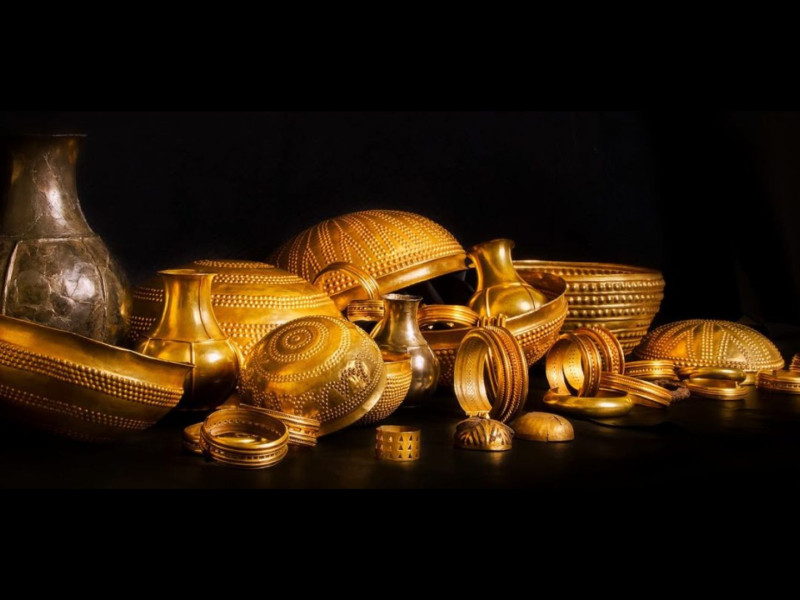A worker from Alicante discovers a jewel and the story his wife invents to keep it sparks an investigation.

It all began in October 1963 in Villena (Alicante) , in the midst of the construction boom. People were searching for gravel on the outskirts of the town to supply the new construction projects, unaware that beneath the workers' feet lay one of thegreatest treasures of the European Bronze Age .
A gold bracelet that set off alarm bellsA bricklayer named Francisco García Arnedo found a strange piece of metal in the gravel. Thinking it was a gear, he handed it over to the foreman, Ángel Tomás Martínez, who hung it on the construction site . Days later, another worker, Francisco Contreras Utrera , picked it up and took it home. It was his wife, Esperanza Fernández García , who decided to show it to the local jeweler , Carlos Miguel Esquembre Alonso, on October 22. Upon realizing that it was an authentic gold bracelet , he immediately alerted the archaeologist, José María Soler García , a key figure in the local culture.
Soler wasted no time. Fearing that the piece was stolen or part of something larger, he informed the Villena Investigating Magistrate . Shortly after, another identical bracelet appeared, this time worn by gravel transporter Juan Calatayud Díaz and his wife Encarnación Martínez Morales , who said it belonged to her grandmother. Soler, now convinced that this was a significant archaeological find, persuaded the magistrate to open an official investigation.

Villena Museum
Treasure of Villena
Calatayud would end up confessing that the bracelet came from a ravine near the city, at the foot of the Sierra del Morrón , a natural area where gravel was extracted for the project. On December 1 , Soler traveled to the area with brothers Pedro and Enrique Domenech Albero and their sons. At dusk, Pedro Domenech discovered two new bracelets and the edge of a vase . Light was scarce, but they decided to act. Thanks to an urgent note sent with two young men to meet a taxi, they managed to get some lighting and a photographer, Miguel Flor Amat , who captured the only images of the discovery in situ. That same night, the vase was taken to Soler's office .
Europe's second most important treasureThe vessel contained 66 pieces , of which 59 were defined objects and the rest fragments. The collection weighed nearly 10 kilos and was made of gold, silver, iron, and amber. Among the objects were bracelets, vessels, buttons, awls, and a necklace . Iron , considered a precious metal at the time, makes the find unique in the Iberian Peninsula.

Its value is such that it is surpassed in Europe only by that of the Royal Tombs of Mycenae , Greece. The iron pieces are also the oldest found in Spain . The Archaeological Museum of Villena has kept it in a shielded display case ever since, and two complete replicas exist that have allowed the treasure to be displayed in cities such as Madrid, Alicante, Tokyo, and Kyoto .
On December 27 of that same year, railroad worker Pedro Lorente García handed in a third bracelet he had kept in the attic after finding it months earlier. His daughter identified it after seeing it in the Christmas display at the city museum.
Today, the Treasure of Villena is a symbol of a millennia-old legacy, a chance discovery, and the determination of those who knew how to see beyond a simple piece of metal.
ABC.es




%3Aformat(jpg)%3Aquality(99)%3Awatermark(f.elconfidencial.com%2Ffile%2Fbae%2Feea%2Ffde%2Fbaeeeafde1b3229287b0c008f7602058.png%2C0%2C275%2C1)%2Ff.elconfidencial.com%2Foriginal%2F948%2F91c%2Feb2%2F94891ceb2b234f480b2a348fa2c86eb0.jpg&w=1280&q=100)
